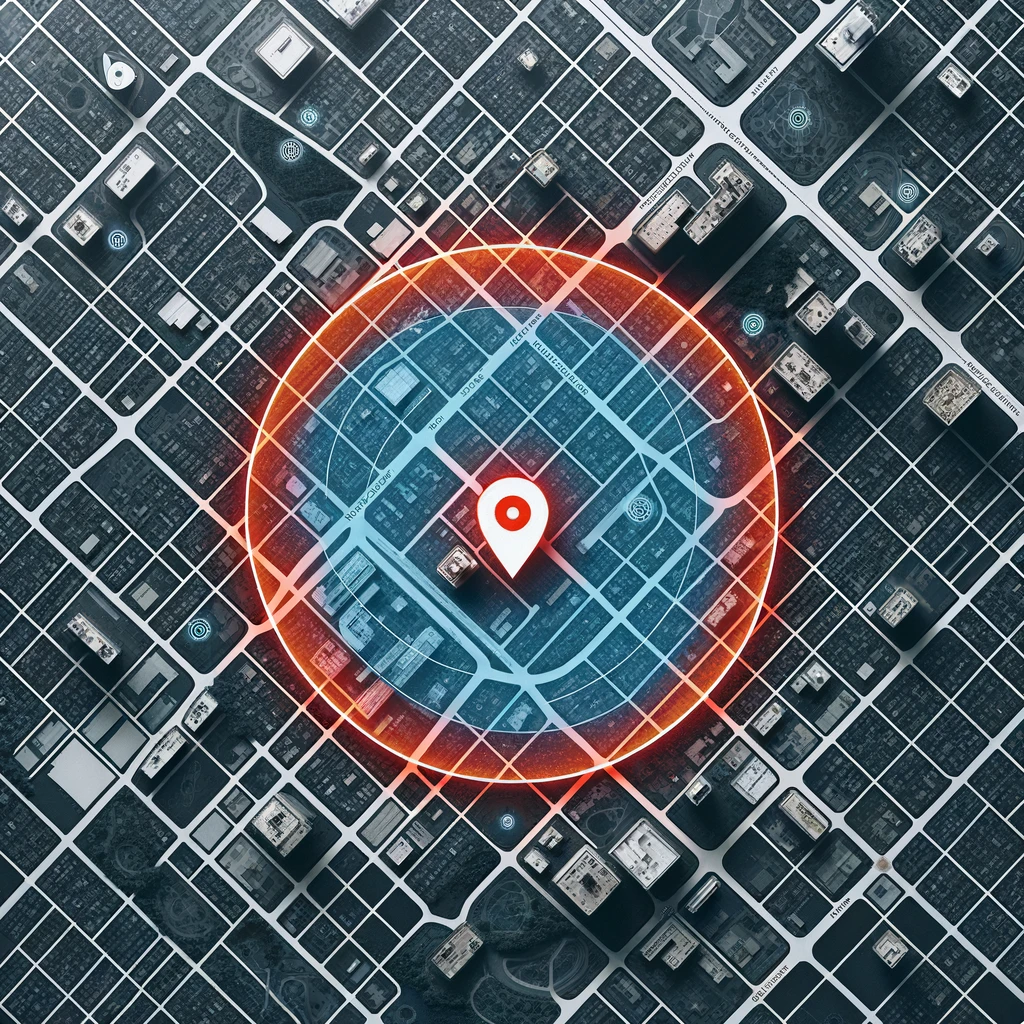
Updated: 31 October, 2024
In today's tech-savvy world, geofencing attendance systems are changing the way we track attendance, using GPS and RFID to automatically check people in and out of a designated area. This move away from old-school methods like punch cards and manual roll calls is a big step forward for managing workforces, keeping places secure, and making events and schools run smoother. But this article doesn't stop there; we dive deeper to introduce an even better solution that promises to take attendance tracking to the next level. Join us as we explore the world of geofencing attendance systems and reveal a cutting-edge alternative that could change the game.
Table of Contents
ToggleKey takeaways
- Geofencing attendance systems use GPS and RFID technology to create virtual boundaries for automatic attendance tracking.
- They offer a modern alternative to traditional attendance methods, enhancing efficiency in workforce management and security.
- These systems are versatile, supporting applications in various sectors including education and event management.
- The article explores the different types of geofencing systems, how they operate, and their specific uses.
- Despite the advantages, challenges exist, prompting the search for more reliable and convenient attendance solutions.
- An advanced alternative to geofencing is introduced, promising to further revolutionize attendance tracking with superior technology, known as Attendance Radar.
What is a geofencing attendance system?
A geofencing attendance system is a method to manage and track attendance using technologies like GPS (Global Positioning System) or RFID (Radio Frequency Identification) to generate a virtual geographical boundary (geofence) around a specific location. This enables automatic check-ins and check-outs as individuals enter or exit the predefined area.
What is it used for?
Geofencing attendance systems help to replace traditional attendance tracking systems like paper timesheets, punch cards, roll-call, amongst others. They are useful in a variety of different areas such as:
- Workforce management: Tracking employees’ working hours. This is mostly used in out-of-office jobs (such as for workers in a construction site) as traditional attendance systems like badge cards are not effective.
- Security: Geofencing can help to monitor access to secured areas. These systems help to ensure that only authorized personnel can enter or leave the premises.
- Education: A geofencing attendance system can be used to track attendance of students as they arrive and leave class.
- Event management: This type of system can be used to track attendance to events, with participants being marked present as they enter the geofence, also being able to note what time they are leaving.
Overall, it tends to be used mostly for employee attendance tracking due to the technology requirements and privacy issues that are discussed later in this blog post.
Interested in employee attendance tracking? Learn How to Choose the Best Attendance Tracking Tool for Work.
What are the different types of geofencing attendance systems, how do they work and what are their applications?
Geofencing attendance systems are differentiated by the technology they incorporate, how they're implemented, and the unique functionalities they provide. Central to all these systems is the principle of creating an invisible perimeter to oversee attendance, but each type is tailored to meet the specific demands of various organizational settings. Let's delve into the diverse categories:
GPS-based Systems
How does it work? These systems deploy the Global Positioning System (GPS) to set up virtual perimeters around a designated physical area. The movement of attendees into or out of this area is monitored via their smartphones or other GPS-capable devices, automatically logging their arrival and departure times.
Applications: Perfectly suited for environments without fixed workstations, such as construction sites, remote job locations, or for field-based roles like sales or construction staff, where traditional attendance systems are impractical.
RFID-based Systems
How does it work? Operating on Radio Frequency Identification (RFID) technology, these systems assign RFID tags or badges to employees. As they cross through entrances or checkpoints fitted with RFID readers, their attendance is registered.
Applications: Ideal for indoor settings such as classrooms, event halls, offices, factories, and warehouses, where establishing physical checkpoints is feasible and can be easily integrated into the environment (such as in the entrances/exits).
Wi-Fi-based Systems
How does it work? These systems harness the existing Wi-Fi infrastructure within a facility to identify when attendees' devices connect or disconnect from the network, using the Wi-Fi coverage to define the boundaries of the geofenced area.
Applications: Best utilized in locations with extensive Wi-Fi coverage, including office buildings and educational campuses, offering a streamlined solution for attendance tracking without the need for additional hardware.
Hybrid Geofencing Attendance Systems
How does it work? This approach melds two or more technologies—such as GPS and Wi-Fi, or RFID and Bluetooth beacons—to enhance the reliability and precision of attendance tracking across diverse settings. By integrating multiple technologies, these systems can offer a more comprehensive solution that addresses the limitations of using a single technology.
Applications: Invaluable for entities operating in varied environments, both indoor and outdoor, or in scenarios where the application of a singular technology might not suffice in terms of coverage or accuracy.
What are the benefits of geofencing attendance systems?
There are several benefits to using geofencing attendance systems that make them superior to other attendance tracking methods. This include:
- Reliability: Overall, geofencing attendance systems can be quite reliable and accurate in tracking attendances. This is mostly because they require little to no manual input, making them less error prone. Moreover, in general they are hard to cheat as they usually will require one to be within a geographical boundary to mark their attendance.
- Efficient: No manual tracking leads to a lot of saved time that can be used in more productive tasks. Additionally, the method is very fast in tracking attendance, often doing it in an automated manner
- Cost-effective: Some types of geofencing solutions that do not require more hardware installations and are built on existing technology, like Wi-fi based systems can be quite cost effective compared to other methods.
- Convenient: When working properly, these systems can be very convenient both for the entity that seeks to track attendance (company, event organizer, educational institution, etc) and for the attendees as they can very easily clock in and out using their device.
What are the drawbacks of geofencing attendance systems?
While still being a very good way of tracking attendance compared to other methods, geofencing attendance systems do have some drawbacks, which vary depending on the type of system.
GPS-Based systems
The main drawback of this type of attendance tracking system is that you can spoof your location in a smartphone device. Therefore, if this type of device is used to mark attendance one can spoof their location to show that they are within the geofence without being there. Additionally, sometimes location data is not so accurate/reliable which can cause problems for the reliability of the system.
RFID-Based system
The main drawback of this type of system is that someone else can sign-in for you if they have your RFID badge. Additionally, these systems can be expensive, as they require RFID badges for everyone.
Wifi-based systems
These can be super easy to cheat depending on where attendance tracking is taking place. For example, for attendance tracking on-campus a student can be on-campus and connected to the Wifi, allowing them to mark their attendance without them needing to go to class. Additionally, remote-access could enable attendees to connect to the Wifi without being close to the router, allowing them to mark attendance.
Hybrid systems
These are definitely the hardest systems to cheat as they use a combination of the other systems, making it harder to exploit all their vulnerabilities. Nevertheless, as we have seen, all of these other systems do have drawbacks and knowing them can allow you to cheat a hybrid system.
Is there a better solution?
While geofencing attendance systems are great and can definitely offer a reliable, efficient and convenient solution they suffer from certain drawbacks that can be exploited to cheat them. So, what would be a better solution? Well, a Bluetooth based system, like Attendance Radar which consists of using a mobile app to emit a low-energy Bluetooth signal which attendees receive on their own app the mark themselves present. The reasons why this type of system is superior are explained below.
Requires a smartphone device unlike RFID systems
Bluetooth based systems have over other geofencing solutions that firstly, they will always require a smartphone device that has Bluetooth to be able to be used. Therefore, people are much less likely to ask someone else to use their device to mark their attendance (would you rather give your unlocked phone to a friend or colleague so that they can mark your attendance or would you rather just attend?).
Bluetooth signals are not constant and have a shorter range than Wifi
Secondly, Bluetooth signals have an actual physical range that cannot be remotely accessed and is much smaller than other technologies like Wifi, making it harder to cheat. Additionally, as a signal is only emitted for a short period of time, not only would attendees need to be close enough to the device emitting to actually receive it but they also need to be there at the right time, making it harder to cheat.
You cannot spoof the receival of a Bluetooth signal
Unlike a GPS-based system, there is no way to spoof your location to mark your attendance. As mentioned before, you need to be in the actual physical range of the Bluetooth signal and only while it is being emitted to be able to receive it and mark your attendance.
It is very cost effective
Unlike RFID badges, using a mobile app like Attendance Radar is very cost effective as it is completely free to download and use. All you need is an iOS or Android device and you can start to use the app to track attendance.
Conclusion
Geofencing attendance systems are great to track attendance in a variety of different ways and settings. In general, they are quite efficient, reliable and convenient. However, they do suffer from certain drawbacks that can be used to cheat the system and mark attendances that should not be marked. A Bluetooth-based attendance tracking system, like Attendance Radar, offers a much more reliable solution that does not have the drawbacks of the geofencing attendance systems, while having all the benefits.
Author
-

Nicolas Montauban
Nicolas is the Product Manager of the Attendance Radar app at Codific. He is a certified Product Owner, an expert in digitalization and has a thorough understanding of the EdTech industry. Nicolas has an MSc in Business Information Management from the Rotterdam School of Management and a BSc in Economics and Business Economics from the Erasmus School of Economics. Additionally, he has worked 2 years as a Teaching Assistant at Erasmus University, giving him an inside look into the higher education industry. This experience has been extremely valuable for him, strongly aiding him in his role as Product Manager, as he developed a thorough understanding of how it is to teach and take attendance in university classes.
View all posts








